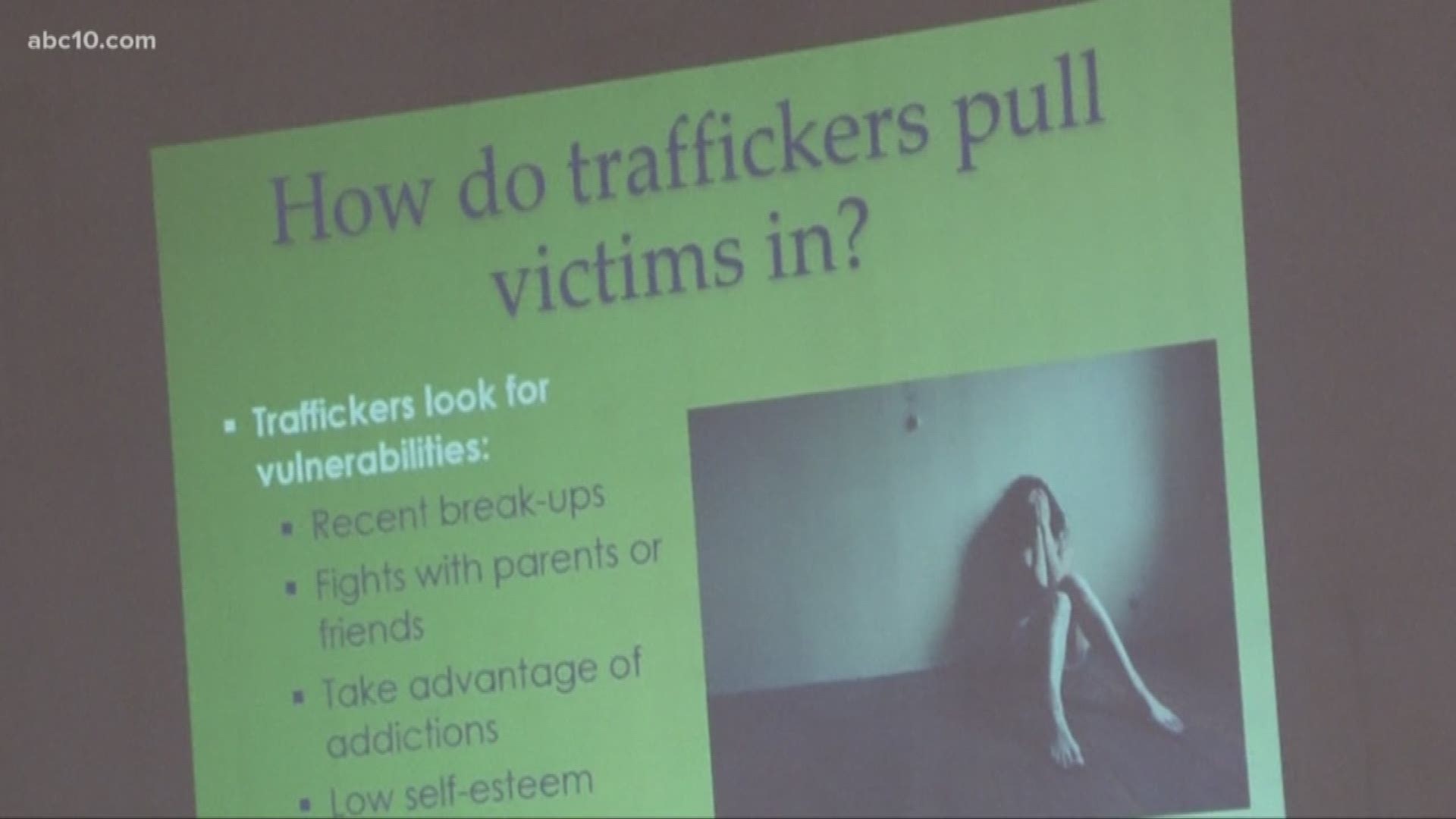STOCKTON, Calif. — Danielle Okazaki was walking from a friend's home in Stockton last summer when she noticed a car following her.
"He's passing me by really slow and I'm thinking, 'This can't be good,'" Okazaki recalled. "You know, you have that instinct. So I'm telling myself, 'Maybe I should just go back to my friend's house.' So I ended up turning around."
She said each time she turned around, he followed her. That's when she called 911 on her cell phone, making sure the stranger knew she was calling for an emergency and he drove off. Whether she was a target of human trafficking, she'll never know.
But she wasn't a victim.
The Edison High School senior was one of the dozens of other students from Stockton schools on hand at the second annual Anti-trafficking and Violence Prevention Youth Summit at the Civic Auditorium.
They learned about how human sex traffickers recruit victims and what happens when someone gets caught in a life of prostitution.
"We are definitely seeing an increase mostly because of technology," said Suzanne Shultz, Family Justice Center Program Manager for the San Joaquin County District Attorney Office, who presented at the youth summit. "Technology affords traffickers the opportunity to put these kids online and they don't have to walk the street in plain view of other people."
In her presentation entitled "Is Your Soul For Sale?" Shultz says traffickers are targeting girls and even some boys in the age range of 12 to 14 into a life of prostitution. She says they're more vulnerable at that age because they don't have the mental capacity to understand the true risks involved when making decisions.
Schultz says traffickers will hang around malls, near schools or other public places, looking for potential victims and then approaching them.
"One of the things that we see is the traffickers will tell the victim, 'Hey, we're doing a music video shoot. We're looking for some backup dancers. We're looking to be in this modeling shoot,'" said Shultz.
She says they will also get a victim's number and text them and tell them how beautiful they are to make them feel wanted.
"And, for young people, the first time that they're feeling that somebody's attracted to them like that, it can be intoxicating," Shultz explained.
In more than an hour-long presentation, Shultz graphically detailed how a life in prostitution can mean sexual slavery for years, sometimes decades. For parents, she noted signs to look out for that perhaps their child has become a victim.
"If your child all of a sudden starts coming home with clothes and jewelry and a new phone and makeup and new purses, something that you didn't buy for them, that's a big indicator," said Shultz. "If all of a sudden your child is having behavioral changes, their grades are falling, they're very withdrawn, they're secretive, those are big signs."
Shultz says parents need to stay on top of their children's social media, too. For more information, call 209-468-2437 or go to sjcfamilyjusticecenter.com.
Continue the conversation with Kurt on Facebook.
________________________________________________________________
Sex trafficking is a billion-dollar-a-year industry in the u.s. and traffickers are preying on young girls across the nation - our daughters, sisters and friends - right in our backyards.

